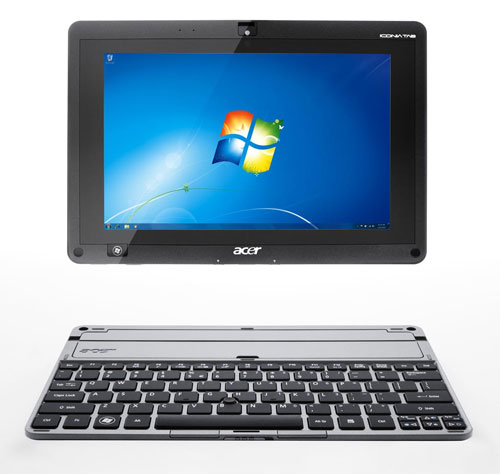
Taiwanese computer manufacturer Acer on Wednesday unveiled a selection of new products, devices aimed at the education sector and a slightly changed brand image. The company’s logo is now light green instead of dark green.
It’s releasing a wide range of colourful netbook and notebook computers, which it says is in keeping with consumer demands to have devices that are both “functional and fashionable”.
It will be hoping the new products can revive its fortunes: the company has lost considerable market share in PCs in the past year, plummeting from second to fourth place in global PC sales in the second quarter of 2011, according to data from analyst firm Gartner.
It has also expanding its smartphone offerings and will be releasing a wide variety of touch-screen handsets in coming months to bolster its existing range.
Having recently released its first tablet, the 10-inch Android-driven Iconia A500, the company is now planning a 7-inch model in a variety of colours. “Our research has shown that the biggest buyers of tablets are women, and that they want a variety of options when it comes to a device’s appearance,” says Acer SA product manager Graham Braum.
As a professional alternative to the Iconia tablets, Acer has also released the Iconia Tab W500: a Windows-based tablet that includes a keyboard dock that attaches to its face to form a case and is pitched as a “multi-usage” professional device that can be used both as a tablet and as a netbook.
In the education market, Acer has unveiled a range of interactive, projector-driven whiteboards that allow teachers or presenters to record notes, control their computer via it, and control it from either a connected computer or via a supplied electronic pointer.
It has also developed accompanying educational software that allows teachers to conduct tests and exams electronically, monitor and oversee any number of linked netbooks, laptops or desktops, and even send notes to students via cloud-based systems.
Teachers can limit what students can access from their devices and can see exactly what students are doing on their devices at any given time.
Braum says that the system “works both ways, in that it also means entire classes can be recorded, which keeps teachers on their toes, too”.
As part of its push into the education space, Acer is building education centres in SA as well as classroom management software and looking at ways to incorporate cloud computing solutions into education.
In conjunction with Microsoft, it has released a netbook aimed at the education market, complete with a rugged, rubberised shell, a bundled mouse and preloaded educational software that costs about R2 500.
In addition to its new educational products, Acer has also announced a number of changes to its executive staff. Group chairman JT Wang has been appointed as CEO after acting in that capacity since Gianfranco Lanci resigned in late March amid rumours that he was displeased with the company’s long-term goals.
The company has opted to split its consumer and professional divisions so that each can operate autonomously.
Acer wants to boost its presence in the commercial PC space, continue the globalisation of its brand and enhance both its consumer and professional lines of what it calls “mobility solutions”. — Craig Wilson, TechCentral
- Subscribe to our free daily newsletter
- Follow us on Twitter or on Facebook




